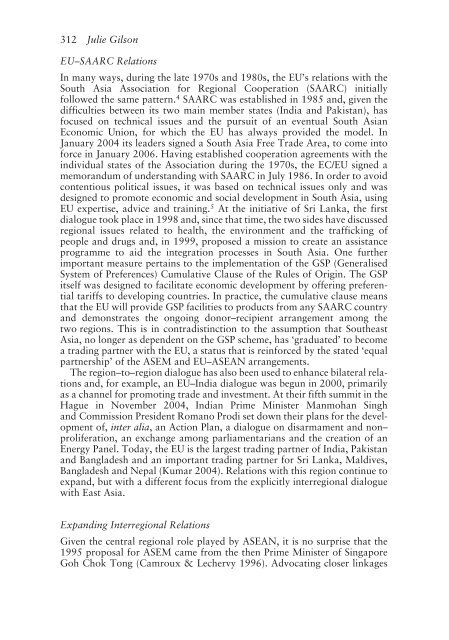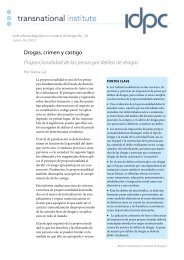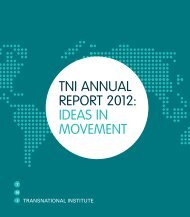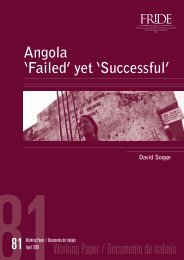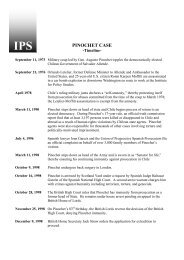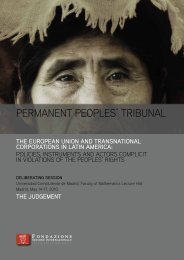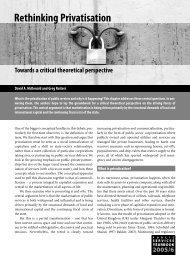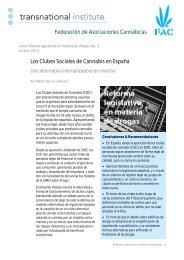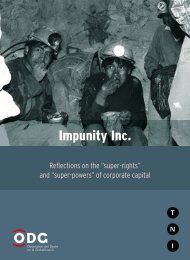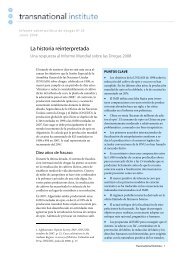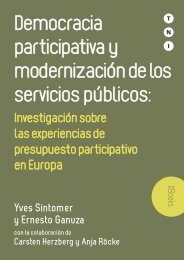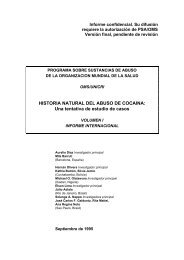New Interregionalism? The EU and East Asia
New Interregionalism? The EU and East Asia
New Interregionalism? The EU and East Asia
Create successful ePaper yourself
Turn your PDF publications into a flip-book with our unique Google optimized e-Paper software.
312 Julie Gilson<strong>EU</strong>–SAARC RelationsIn many ways, during the late 1970s <strong>and</strong> 1980s, the <strong>EU</strong>’s relations with theSouth <strong>Asia</strong> Association for Regional Cooperation (SAARC) initiallyfollowed the same pattern. 4 SAARC was established in 1985 <strong>and</strong>, given thedifficulties between its two main member states (India <strong>and</strong> Pakistan), hasfocused on technical issues <strong>and</strong> the pursuit of an eventual South <strong>Asia</strong>nEconomic Union, for which the <strong>EU</strong> has always provided the model. InJanuary 2004 its leaders signed a South <strong>Asia</strong> Free Trade Area, to come intoforce in January 2006. Having established cooperation agreements with theindividual states of the Association during the 1970s, the EC/<strong>EU</strong> signed amemor<strong>and</strong>um of underst<strong>and</strong>ing with SAARC in July 1986. In order to avoidcontentious political issues, it was based on technical issues only <strong>and</strong> wasdesigned to promote economic <strong>and</strong> social development in South <strong>Asia</strong>, using<strong>EU</strong> expertise, advice <strong>and</strong> training. 5 At the initiative of Sri Lanka, the firstdialogue took place in 1998 <strong>and</strong>, since that time, the two sides have discussedregional issues related to health, the environment <strong>and</strong> the trafficking ofpeople <strong>and</strong> drugs <strong>and</strong>, in 1999, proposed a mission to create an assistanceprogramme to aid the integration processes in South <strong>Asia</strong>. One furtherimportant measure pertains to the implementation of the GSP (GeneralisedSystem of Preferences) Cumulative Clause of the Rules of Origin. <strong>The</strong> GSPitself was designed to facilitate economic development by offering preferentialtariffs to developing countries. In practice, the cumulative clause meansthat the <strong>EU</strong> will provide GSP facilities to products from any SAARC country<strong>and</strong> demonstrates the ongoing donor–recipient arrangement among thetwo regions. This is in contradistinction to the assumption that Southeast<strong>Asia</strong>, no longer as dependent on the GSP scheme, has ‘graduated’ to becomea trading partner with the <strong>EU</strong>, a status that is reinforced by the stated ‘equalpartnership’ of the ASEM <strong>and</strong> <strong>EU</strong>–ASEAN arrangements.<strong>The</strong> region–to–region dialogue has also been used to enhance bilateral relations<strong>and</strong>, for example, an <strong>EU</strong>–India dialogue was begun in 2000, primarilyas a channel for promoting trade <strong>and</strong> investment. At their fifth summit in theHague in November 2004, Indian Prime Minister Manmohan Singh<strong>and</strong> Commission President Romano Prodi set down their plans for the developmentof, inter alia, an Action Plan, a dialogue on disarmament <strong>and</strong> non–proliferation, an exchange among parliamentarians <strong>and</strong> the creation of anEnergy Panel. Today, the <strong>EU</strong> is the largest trading partner of India, Pakistan<strong>and</strong> Bangladesh <strong>and</strong> an important trading partner for Sri Lanka, Maldives,Bangladesh <strong>and</strong> Nepal (Kumar 2004). Relations with this region continue toexp<strong>and</strong>, but with a different focus from the explicitly interregional dialoguewith <strong>East</strong> <strong>Asia</strong>.Exp<strong>and</strong>ing Interregional RelationsGiven the central regional role played by ASEAN, it is no surprise that the1995 proposal for ASEM came from the then Prime Minister of SingaporeGoh Chok Tong (Camroux & Lechervy 1996). Advocating closer linkages


